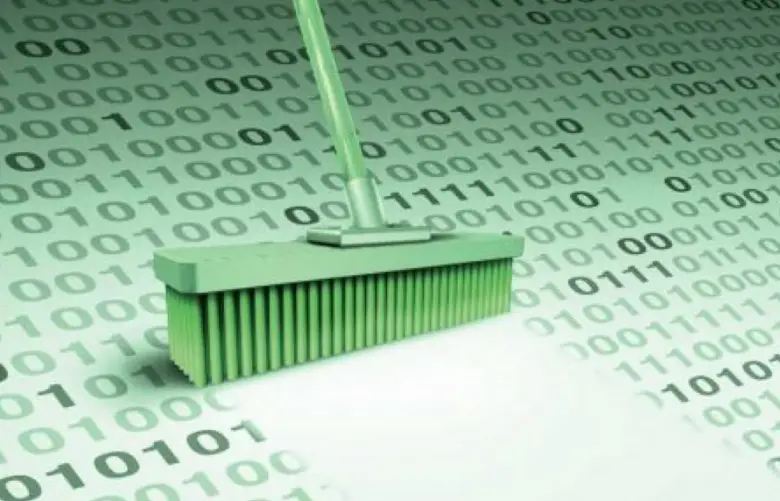In the digital age, data has become the bedrock of decision-making across various domains. However, the effectiveness of these decisions hinges on the quality of the data at hand.
Data cleaning process is a crucial step. It involves identifying and rectifying errors, inconsistencies, and inaccuracies in datasets to ensure their accuracy and reliability.
By addressing issues like missing values, duplicate entries, and format discrepancies, data cleaning process enhances the integrity of information, leading to more sound analyses and dependable outcomes.
In this article, we delve into effective data cleaning techniques for improving accuracy and reliability.
So, let’s get started with the complete data cleaning process.


POSTGRADUATE PROGRAM IN
Data Science & AIML
Learn Data Science, AI & ML to turn raw data into powerful, predictive insights.
Why is Data Cleaning Important?
Data cleaning process holds immense significance due to its pivotal role in ensuring the accuracy, reliability, and credibility of the information upon which decisions are made. In the contemporary landscape driven by data-driven insights, the quality of these insights is only as good as the data itself.
Data cleaning addresses the inherent imperfections, errors, and inconsistencies occurring naturally during data collection and storage. If left unattended, these imperfections can distort analysis results, misguide decision-makers, and lead to erroneous conclusions.
By systematically identifying and rectifying issues such as duplicates, irrelevant data, formatting errors, outliers, and missing values, data cleaning process creates a solid foundation for meaningful analysis and informed decision-making.
The importance of this data cleaning process extends across industries – from business and finance to healthcare and research – where the accuracy of conclusions and strategies heavily hinges on the quality of underlying data.
Data cleaning process bridges the gap between raw data and reliable insights, ensuring that the information driving our actions is as accurate and dependable as possible.
Here is the information about Advanced Certification Program in Data Science & Analytics.
How to Clean Data?
The data cleaning process includes the following points:
Remove duplicate or irrelevant observations
Duplicates and irrelevant data are two common culprits that can significantly compromise the integrity of your data analysis. They not only skew the results but also consume valuable resources regarding storage and processing power.
To combat these issues, the first step of the data cleaning process is duplicate removal or data deduplication. By identifying and eliminating identical or near-identical records, you create a clean dataset that reflects the true scope of your information.
To achieve this, unique identifiers like unique IDs, timestamps, or combinations of attributes are utilized. This process streamlines your data, enhancing its accuracy and reducing redundancies.
Fix structural errors
More accurate types of data cleaning pose significant barriers to effective analysis. To overcome these hurdles, engaging in data standardization and format correction is essential.
This data cleaning process involves harmonizing diverse data formats such as dates and numbers, ensuring uniformity across the dataset. Moreover, verifying consistent units and rectifying typographical errors further enhance data accuracy and reliability.
This meticulous attention to detail eliminates discrepancies and facilitates seamless integration and comparison across various data points. Data cleaning tools streamline processes, enhancing accuracy and efficiency.
Filter unwanted outliers
Outliers, data points significantly different from the rest, possess the power to skew analyses and influence models. Properly addressing them within the realm of data cleansing is vital.
The initial step in the data cleaning process involves outlier detection, distinguishing between erroneous entries and legitimate anomalies. This calls for a nuanced understanding of the data context.
Once identified, three options arise: removing them for a more accurate representation, adjusting their values to minimize their impact, or analyzing them separately to glean unique insights.
This decision-making process helps maintain statistical integrity while accounting for exceptional cases. Thoughtfully handling outliers makes your analysis more robust and attuned to real-world complexities.
Handle missing data
Missing data, a common challenge in data analysis, can undermine the accuracy of your insights. Missing data handling involves a strategic approach to address this issue. Start by understanding the nature of the missingness: is it random or systematic?
This distinction guides your course of action. If missingness is random, consider employing imputation techniques that estimate missing values based on existing data patterns. Alternatively, opting to delete corresponding rows or columns might be necessary for cases with excessive missing data.
This meticulous approach ensures data completeness, paving the way for a more comprehensive and trustworthy analysis that accounts for the complexities of real-world data. Various data cleaning tools exist to validate, correct, and enrich information.
Data cleaning and Validation
Before analysis, conducting a data quality check is paramount. Validate your data’s accuracy by cross-referencing it with reliable sources. Confirm that the data aligns with your expectations and logical reasoning. Employ data cleaning and validation techniques to uncover anomalies that might skew results.
This meticulous data cleaning and validation process ensures that your analysis rests on a solid foundation, boosting your confidence in the reliability of your insights and decisions.
Components of quality data
Ensure your data possesses key attributes: accuracy (correct values), completeness (no missing values), consistency (uniform formats), reliability (trustworthy sources), timeliness (up-to-date), and relevancy (pertinent to analysis goals)—keywords: data quality components, data integrity, reliable data.
Communicate with your team
Collaboration is key. Regularly communicate with stakeholders to understand data requirements and expectations. Involve domain experts to identify anomalies. Keep your team informed about data cleaning process and decisions.
Click here to know about Big Data Analytics: What It Is, How It Works?
What are the Advantages of Data Cleaning
Data cleaning process offers a range of valuable advantages that significantly enhance the quality and reliability of your data-driven endeavours:
- Accurate Insights: By removing errors and inconsistencies, data cleaning process ensures that the insights drawn from your data are precise and trustworthy. This accuracy directly translates into more informed decision-making.
- Reliable Decision-Making: Clean data forms the basis for reliable decisions. When your data is free from errors and clutter, you can confidently formulate strategies and allocate resources based on solid information.
- Enhanced Model Performance: Accurate data is essential for tasks like machine learning. Clean data improves model accuracy, leading to better predictions and outcomes.
- Credibility: Clean data boosts the credibility of your reports and analyses. Stakeholders can trust your information, fostering stronger relationships and informed collaborations.
- Resource Efficiency: Data cleaning process may seem time-consuming, but it saves time and resources in the long run. You’ll spend less effort correcting errors and reanalyzing flawed data.
- Compliance: In regulated industries, accurate data is not just an advantage – it’s a necessity. Data cleaning and validation helps you adhere to data quality standards and compliance requirements.
- Cost Savings: Storing and data cleaning process is more efficient, reducing storage costs and optimizing data processing expenditures.
- Positive Customer Experience: Clean data ensures accurate communications and tailored services, improving customer satisfaction and loyalty.
- Smooth Data Integration: Data cleaning process ensures consistency when combining data from different sources, preventing integration issues and errors.
- Confident Communication: With clean data, you can confidently communicate insights and findings, knowing that your information is accurate and reliable.


82.9%
of professionals don't believe their degree can help them get ahead at work.
Conclusion
In data-driven decision-making, data cleaning and validation emerges as a silent hero, working behind the scenes to refine the raw material that fuels our insights. Through the meticulous removal of duplicates, the discerning filter of irrelevant data, and the careful correction of errors, data cleaning process shapes a dataset that is accurate, reliable, and ready for analysis.
As we navigate a world that increasingly relies on data-driven outcomes, the importance of data cleaning shines ever brighter. The data cleaning process elevates our analyses from mere guesswork to well-founded conclusions, strengthening the integrity of decision-making and paving the way for a future built upon accurate, dependable insights.
What is data cleaning, and why is it crucial?
What are the key components of high-quality data?
What's the approach to handle missing data in datasets?
How can unwanted outliers be filtered from datasets?
What's the process to fix structural errors in data?
Updated on July 4, 2024
